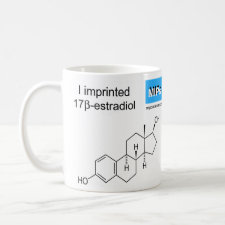
Authors: do Nascimento Bianchi V, de Araujo Silva MR, Lamim MA, da Silva CL, Campos de Lima E
Article Title: Solid phase extraction using molecular imprinting polymers (MISPE) for the determination of estrogens in surface water by HPLC.
Publication date: 2017
Journal: Ambiente e Agua - An Interdisciplinary Journal of Applied Science
Volume: 12
Issue: (3)
Page numbers: 380-389.
DOI: 10.4136/ambi-agua.1991
Alternative URL: http://www.ambi-agua.net/seer/index.php/ambi-agua/article/view/1942
Abstract: Estrogens are emerging pollutants and traditional sewage treatments unable to remove them. They are harmful to human health and to the environment. It is therefore important to evaluate the presence and concentration of estrogens in water bodies and environmental matrices. This work presents the development and application of a methodology for the determination of E1, E3, EE2 and E2 in surface waters using solid phase extraction with molecular imprinting polymers (MISPE) followed by identification and quantification by HPLC-DAD. Acetonitrile and water deionized acidified with phosphoric acid pH 3 (1:1, v/v), a flow rate of 1.0 ml min-1, at 40 °C and an injection volume of 5 μL. The method was validated according to the protocol ICH Q2R. Reproducibility and repeatability tests resulted in a smaller variation coefficient of 10%; the calibration curves in the concentration ranged from 1 to 20 mg L-1, with return linearity values greater than 0.99. The limits of detection and quantification were less than 1 mg L-1 and the method was satisfactory for specificity and selectivity tests using caffeine, which is often found in water bodies receiving effluent, and DES, an estrogen used in the treatment of prostate cancer. Selected samples underwent clean-up and pre-concentration treatments using solid phase extraction with commercial phase (C18) and molecularly imprinted polymers (MISPE). The analysis of MISPE extracts indicate that it is possible to obtain results with greater sensitivity and precision for analyses of complex environmental matrices, demonstrating that the developed method can be applied in complex environmental matrices.
Template and target information: estriol, E3, β-estradiol, E2, 17α-ethinylestradiol, EE2, estrone, E1
Author keywords: emerging pollutants, endocrine disruptors, environmental matrices



Join the Society for Molecular Imprinting

New items RSS feed
Sign-up for e-mail updates:
Choose between receiving an occasional newsletter or more frequent e-mail alerts.
Click here to go to the sign-up page.
Is your name elemental or peptidic? Enter your name and find out by clicking either of the buttons below!
Other products you may like:
 MIPdatabase
MIPdatabase









